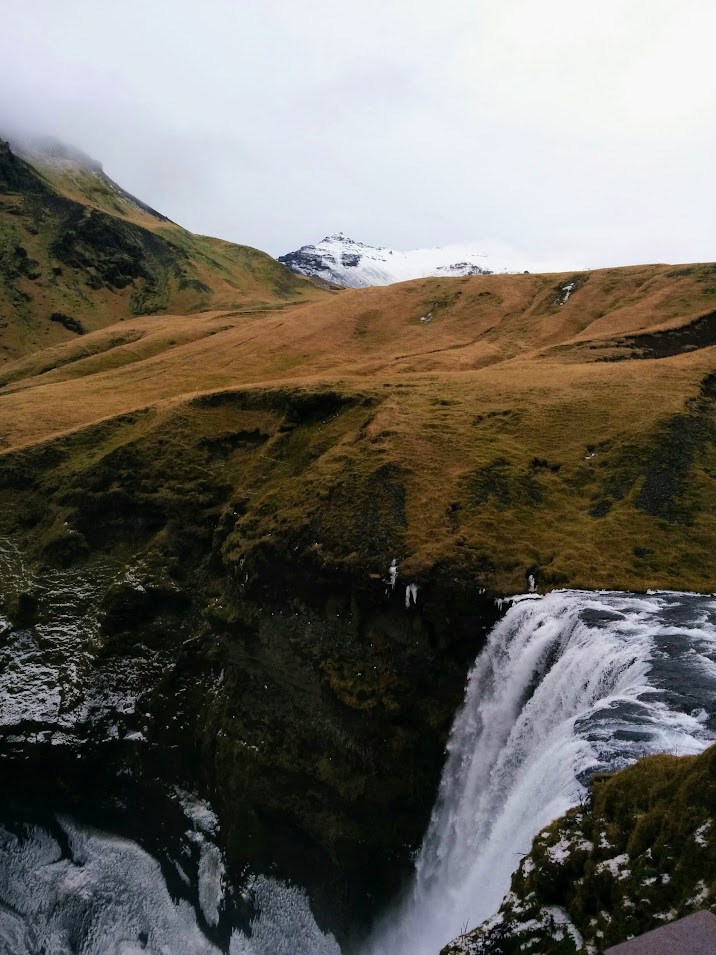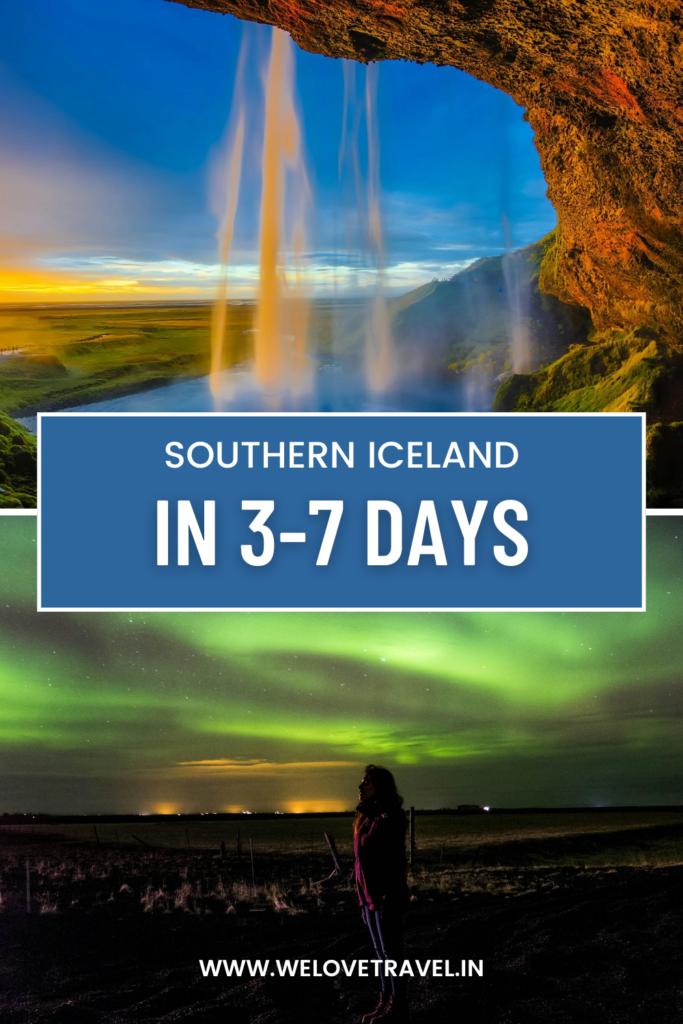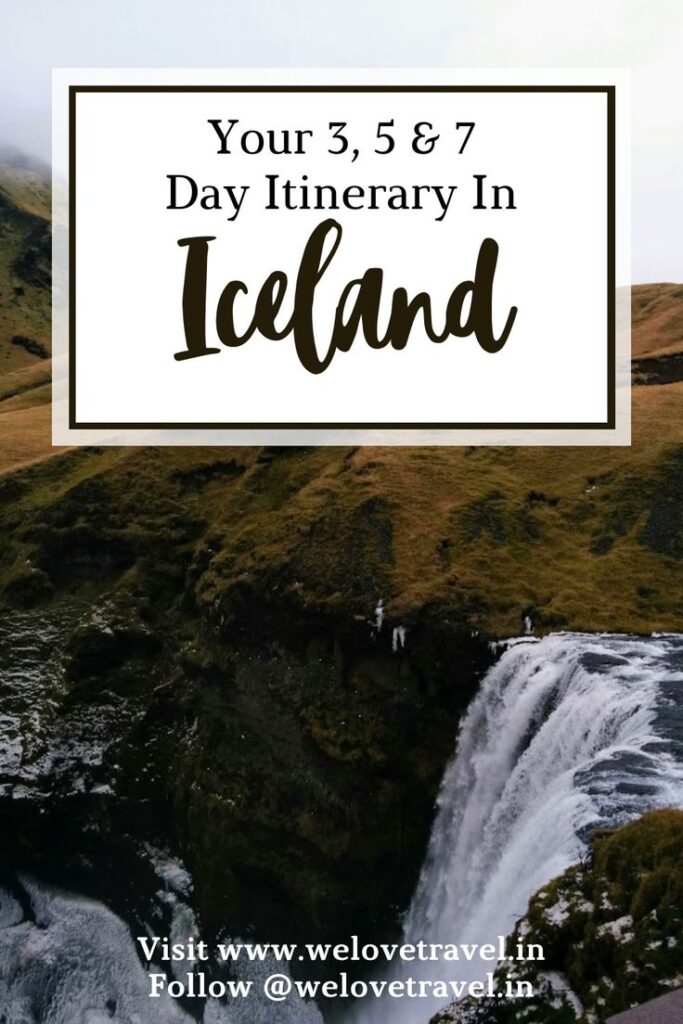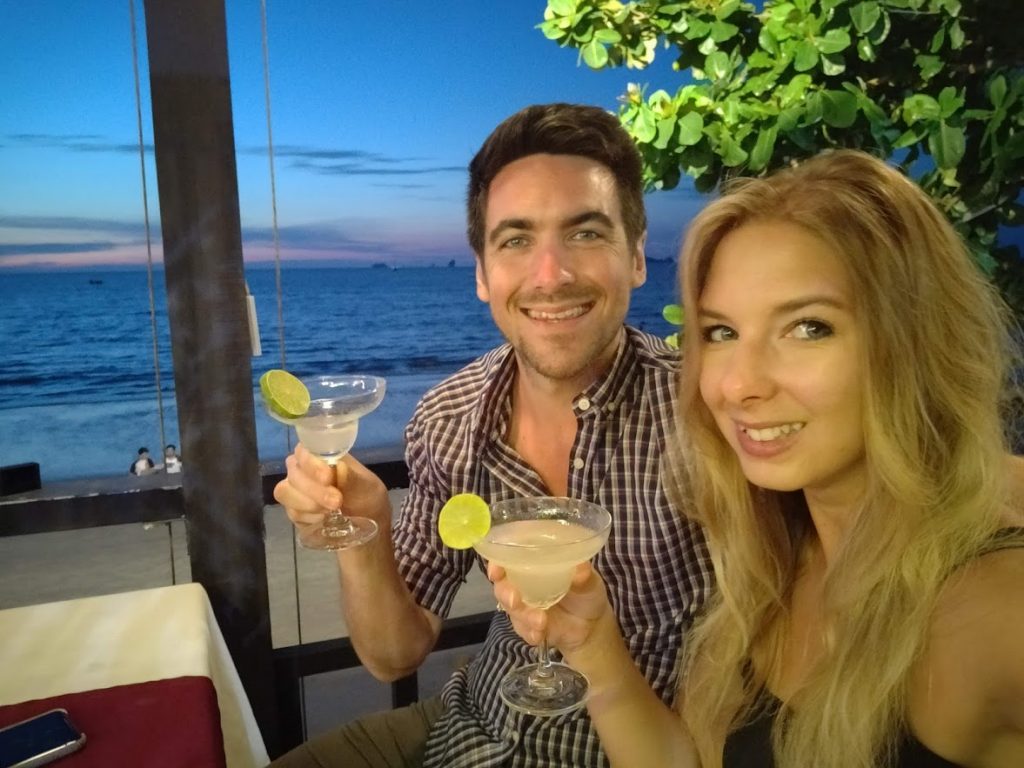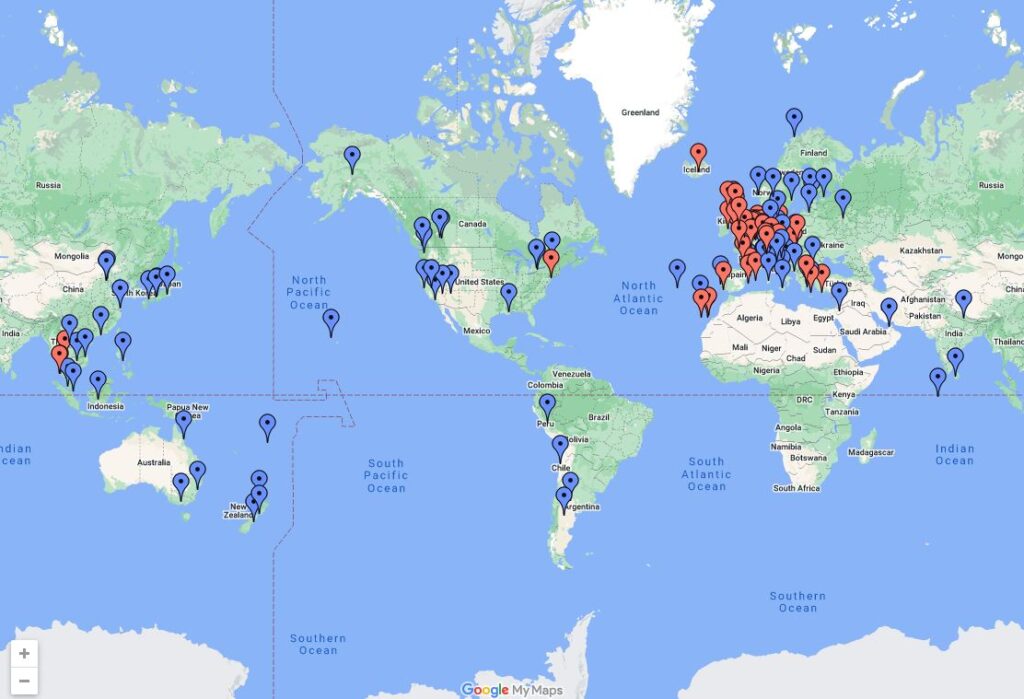Whether you have 3 days or 7 days in Iceland, there is so much to see and do. Below is our suggested South Iceland itinerary, based on our own travelling experience.
Iceland is one of the most incredible places you can visit. Known as the land of fire and ice (for good reason), nowhere else can you visit bursting geysers, dramatic black sand beaches, huge cascading waterfalls, serene iceberg lagoons, bubbling volcanoes, and vast glacier fields, without having to drive anywhere more than a handful of hours. And you can see all of this and so much more just in Southern Iceland.
If you only have 7 days in Iceland, then trying to complete something like the Ring Road, would be too much to take on, and ultimately you wouldn’t see half of what Iceland has to offer. However, the South of Iceland is perfect for a short trip to see all of the main sights and natural beauty this place has to offer. The capital, Reykjavik, and the main international airport, Keflavik, are also situated in the South West, making South Iceland an easy destination for exploring.
Your 3, 5, 7 day South Iceland Itinerary
The beauty of exploring South Iceland is that your plans can be super modular. So if you’re only in Iceland for 3 days as a mini-break or stopover, you can easily see the main highlights without feeling like you’ve missed too much. If you’re in the country a little longer, then you can just add on or switch a couple of days around, depending on your travel plans and flight times. Here’s our suggested South Iceland itinerary:
- Days 1-3: Explore Reykjavik’s main sights and landmarks. Hunt the Northern Lights (if visiting September – March). Tour the Golden Circle. Experience the Blue Lagoon and Iceland’s hot springs.
- Days 4 & 5: Drive to Vik and witness Iceland’s dramatic black sand beaches. Visit the stunning waterfalls of Skogafoss and Seljalandsfoss. Explore the hot pockets of Iceland’s geothermal areas.
- Days 6 & 7: An active day of whale watching or husky sledding (depending on time of year). Explore the stores and streets of Reykjavik.
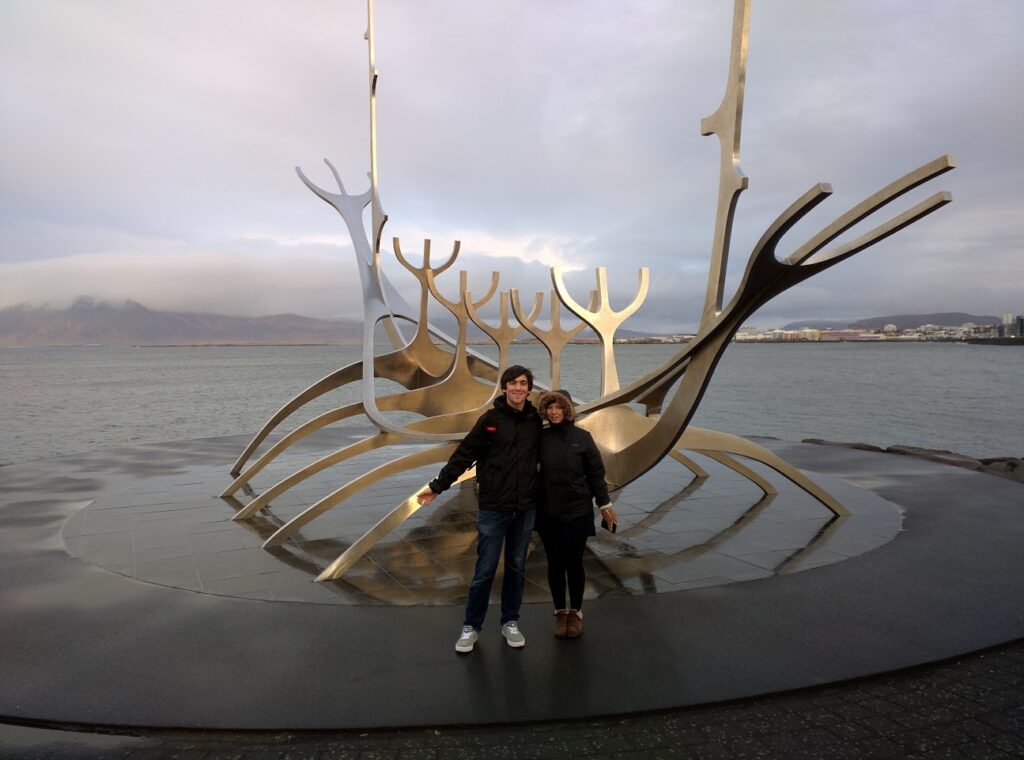
Day 1: explore the city of Reykjavik
Regardless of your arrival time, it’s good to keep things local on your first day. Travel days are long, whether you arrive early in the morning (meaning you have probably been up since the crack of dawn for an early flight), or you arrive in the afternoon (meaning you have lost a big part your exploring time).
Day one is a great opportunity to explore Reykajvik, which is a 50 minute drive from the airport. If you’re planning to stay longer than 3 days, we would recommend looking into car hire. This is more cost effective than booking a taxi from the airport and the cost of tour companies to get you around the main locations. However for 3 days or less, you can get away without a car.
A lot of people recommend you go straight to the Golden Circle on your first day. But following travel time, we don’t think this is the best use of your time. The Golden Circle is also one of the most popular activities, so unless you want to arrive during the peak-tourist time, you’re better visiting another day when you can arrive nice and early. Ultimately, if you’re in Iceland, then time exploring Reykjavik should be as high on your list as exploring the Golden Circle. Which is why it’s an ideal day one activity for your South Iceland itinerary!
What to see in Reykjavik
Reykjavik is pretty small as far as capital cities go, making it easy to explore and see all the main sights if you’re only in the area for a short period. We suggest starting with a trip to Hallgrimskirkja, the 73m high church in the centre of the city. From the top, you get fantastic 360 degree views over the city and out to the ocean.
Next, take a short walk to the Sun Voyager. Situated along the shorefront, this “dreamboat” style sculpture was created to celebrate the city’s 200th birthday! You also have views out to Videy Island, with the Imagine Peace Tower (illuminated at night) and Mount Esja, a 914m volcanic mountain range. You can also catch a boat out to Videy Island, which makes for an interesting day trip.
From the Sun Voyager, walk 10 minutes down to the Harpa Reykjavik Concert Hall; home to the Iceland Symphony Orchestra, The Icelandic Opera and the Reykjavik Big Band! But whether you see a performance at Harpa or not, the building is 100% worth a visit and an explore. Spend the rest of your day exploring the streets and sights of Reyjavik. Leave time free for some evening activities though, particularly if you’re visiting in the winter time.
Winter activity: hunt the Northern Lights
If you’re visiting during the autumn/winter (September – March) this is a great opportunity to spend your first night Northern Lights hunting. Seeing the lights is never guaranteed, so you’ll want to give yourself as many opportunities as possible to see them. If you don’t see them on your first night, there’s always tomorrow.
If you’ve never gone searching for the Northern Lights before, then it’s worth booking your first outing with a tour company. They know all the locations to drive to, but you’ll also pick up some helpful hints and tips yourself, should you want to do yourself later during your trip. We did exactly this when we visited. We were unsuccessful with the tour company, but we picked up lots of very helpful tips, which eventually helped us track down the lights ourselves during our 7 days in Iceland.
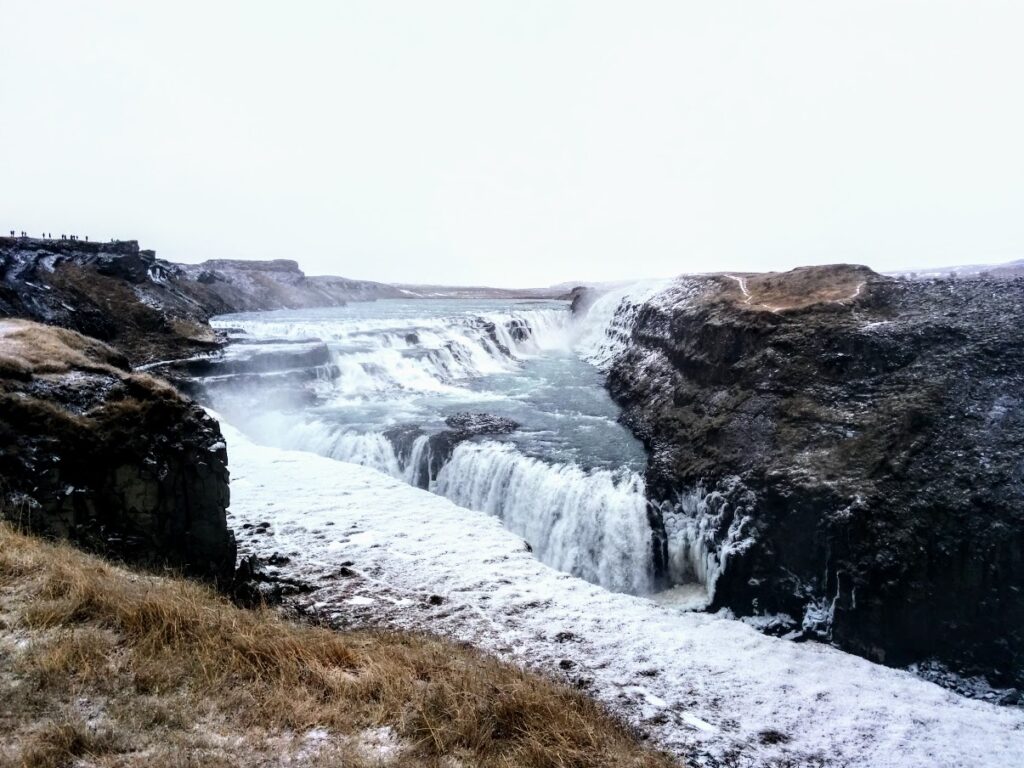
Day 2: Golden Circle tour
Day 2 of your South Iceland itinerary is a big one! The Golden Circle is one of the most popular scenic routes in Iceland. This is a fantastic introduction to the country and 3 of the most popular natural wonders that Iceland has to offer. This includes Pingvellir National Park, Geysir geothermal area and Gullfoss Waterfall. But you’ll soon realise there is so much more to see beyond these 3 attractions.
The Golden Circle can be done via an organised tour (there are dozens of tour companies offering day trips), or your own self-drive tour. There are pros and cons to each. We hired a car, which gave us flexibility to see everything at our own pace. However, if you’re not comfortable with the thought of driving in Iceland, then an organised tour might be the better option.
Because it is one of the most popular activities in Southern Iceland, if you’re doing a self-drive tour, we recommend getting there early (before 9am, or before 10am in the winter) so you can get ahead of the tour groups and buses which turn up throughout the day.
In addition to the classic 3 Golden Circle sights, you can also add on visits to Faxafoss Waterfall, Friðheimar (an amazing geothermal heated tomato plant greenhouse & restaurant), the Secret Lagoon and Kerid Crater. We have included all of these in our Golden Circle highlights write-up.
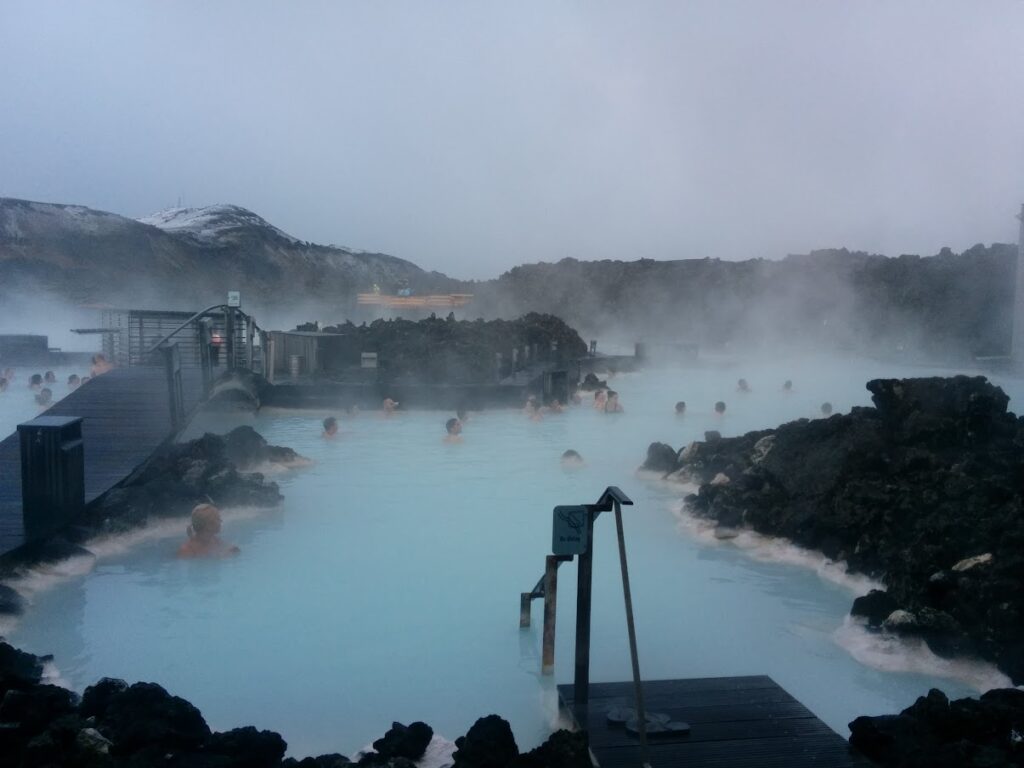
Day 3: the Blue Lagoon and Iceland’s hot springs
Today is all about relaxing in one of Iceland’s unique offerings: their hot springs! If you do our recommended extras on the Golden Circle tour, then you will stop off at the Secret Lagoon. There are lots of other hot springs to visit, however, you can’t come to Iceland and not visit the famed Blue Lagoon. Known for its milky blue water, the Blue Lagoon is the most popular and touristic of the hot springs in Iceland.
Personally, we much preferred the Secret Lagoon. We found that the water was too shallow at the Blue Lagoon and wasn’t as warm. It is however a fun experience, and is a rite of passage for many travelling to Iceland for the first time. Also worth a visit is the Blue Lagoon’s in-water massages!
Cornered off in a private part of the pool, you’re placed on what is basically a floating yoga mat. Laying there, floating in the water, you’ll have a hot towel draped over you to keep you warm. We each booked a full body massage, starting on our feet, working up to our legs, arms, shoulders and head – it was glorious! Every few minutes they grab the side of the mat and dip you back under the water, which is honestly the nicest sensation. You can get 30 or 60 minute massages and afterwards they leave you to just float around and relax. It’s not cheap, but as a treat, we think it’s worth it.
If this is the end of your 3 days in Iceland, then you’re in the perfect position to drive or taxi back to Keflavik Airport. However, if you’re in Iceland longer, head back to Reyjavik to sample more of the city. We continue our recommended South Iceland itinerary for 5+ days below.
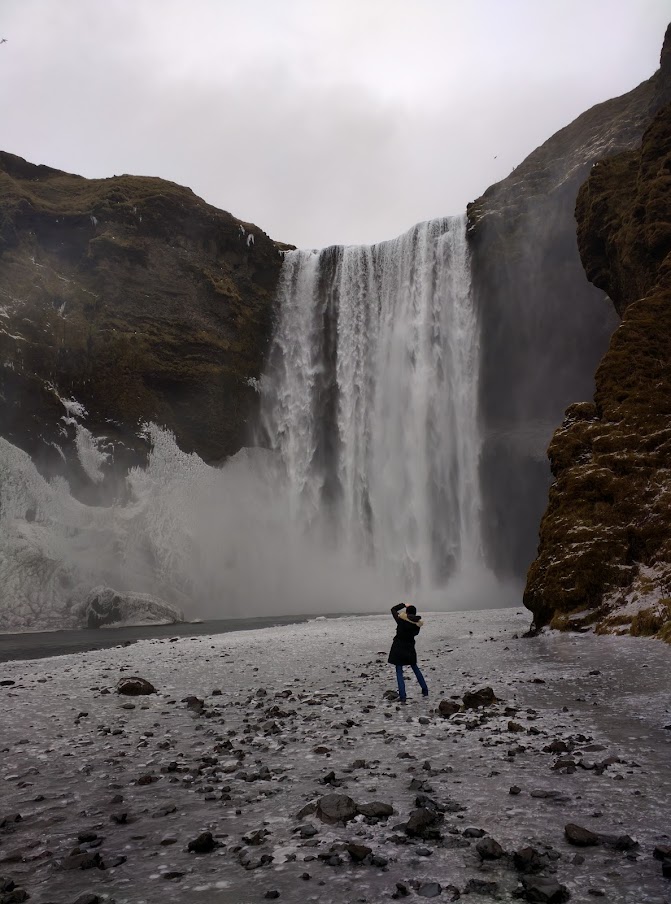
Day 4: drive to Vik and explore the South’s waterfalls
Four days into your South Iceland itinerary you’ll take a short 2.5h to the small fishing village of Vik; a rural part of Iceland, home to 300-500 people. The surrounding area of Vik includes Reynisfjara, Iceland’s world famous black sand beach. These may not be the golden sandy shores we’re accustomed to when we think of holiday beaches, but this will make for an epic day out!
Iceland is home to 130 volcanoes! Many are still active today, including Katla, which has been dormant for 100+ years, but is expected to soon erupt once again. Reynisfjara was formed from a major eruption from Katla, spewing ash and lava for miles around. Located just off the Ring Road, the beach is dramatic and feels cinematic with its dark, moody shoreline contrasting with the foamy white waves of the Atlantic ocean. While there are many volcanic beaches around the world, none are as unique as Reynisfjara. The beach stretches from Vik, all the way to Dyrhólaey, the southern most point in Iceland.
Reynisfjara is also home to its iconic and dramatic sea stacks. According to Icelandic folklore, these sea stacks were once trolls trying to drag a ship to shore. However they didn’t realise the sun was rising and they turned to stone as soon as the sun touched them.
From Reynisfjara, you can head back on yourself on the Ring Road towards Reykjavik. A short drive away is the DC3 plane wreck. Since we visited however, we’ve heard this has grown in popularity and now isn’t worth visiting as much. You can no longer wander through the wreckage anymore like you used to, but if you’re in the area it might well be worth a visit anyway.
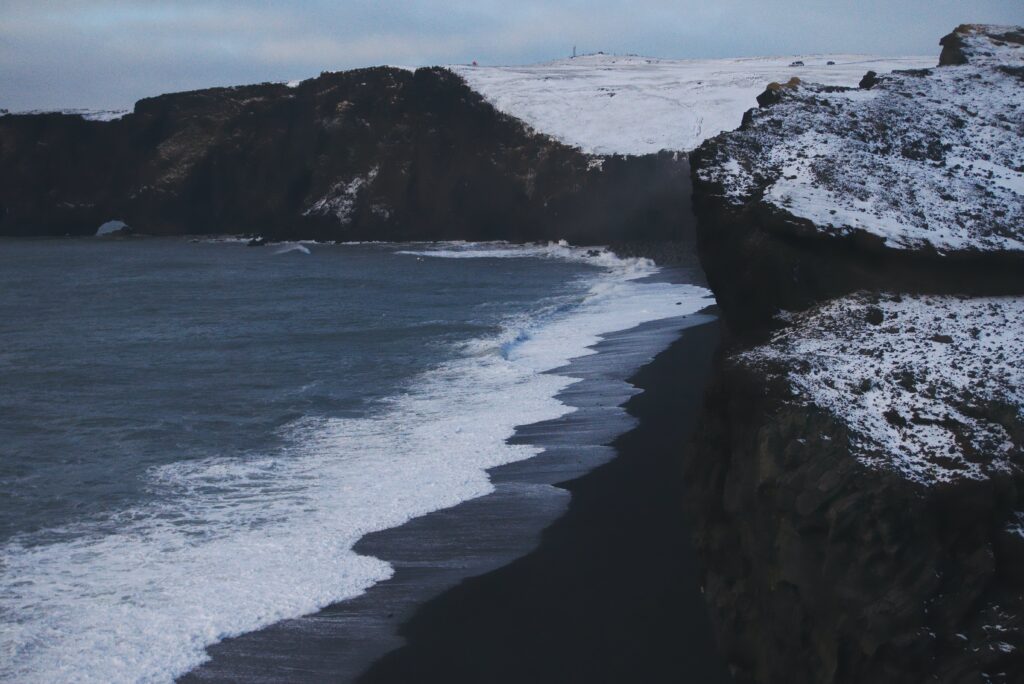
Seljalandsfoss and Skogafoss
Further along the Ring Road are the impressive waterfalls of Seljalandsfoss and Skogafoss. First up is Skogafoss, one of Iceland’s biggest and most beautiful waterfalls. I’s also clearly visible from Route 1, making it incredibly accessible if you’re doing a DIY self-tour of Iceland. You can walk right up to the waterfall, soaking you in the summer, but in the winter the ground can be too slipper! There is however, a staircase which climbs alongside the waterfall, up to a viewing deck where you can look down and admire the cascade from a different angle.
Further up the road is Seljalandsfoss, a stunning 60 meter drop waterfall. What’s different to Seljalandsfoss is that there’s a pathway directly behind it. This means you can completely encircle the waterfall (weather dependent), making it one of Iceland’s most photographed spots.
Day 5: Explore Iceland’s geothermal areas
Known for it’s hot, steamy grounds, you can’t visit Iceland without visiting some form of its geothermal activity. Two areas we particularly enjoyed were Gunnuhver and Krysuvik. Both are about 40 minutes apart, but both are worth visiting if you’re exploring this part of Iceland.
First-up is Krysuvik, a relatively well-known geothermal spot, about 1 hour’s drive from Reykjavik. The ground is alive with steamy, bubbling pots of boiling water, and the scenery is filled with intense hues of blue and red from the sulphur and minerals.
Further down the road is Gunnuhver, located in the southwest part of the Reykjanes Peninsula, just 30 minutes from Keflavik Airport. This is a highly volcanic region of Iceland, due to its proximity to the Mid-Atlantic Rift. It feels a little more off the beaten track compared to Krysuvik, but remains an incredibly impressive geothermal field.
Both sites are filled with various bubbling, steamy (and eggy smelling) mud pools. But don’t let the sulphur smells put you off! Experiencing the earth literally bubbling around you at hundreds of degrees is quite a sight to behold! There are wooden walkways and viewing platforms at both locations where you can safely look out at the bubbling pools around you.
If this is the end of your South Iceland itinerary, then you’re in the perfect position to drive to Keflavik Airport for your departing flight.
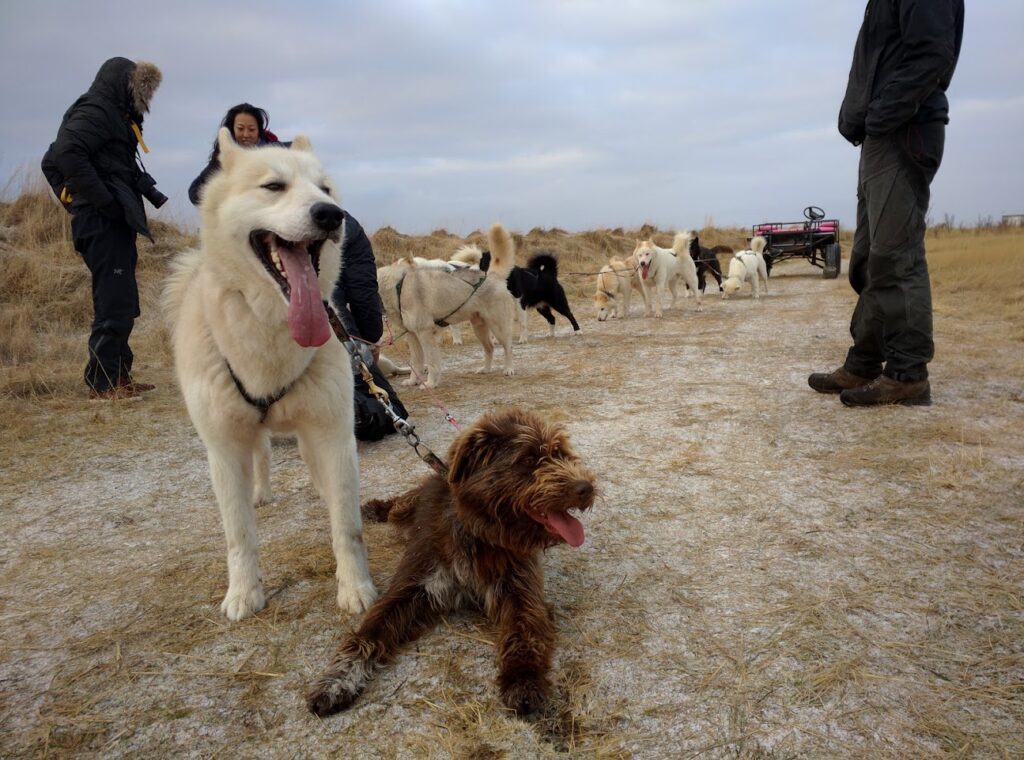
Day 6: Book an activity!
Iceland is a year-round destination, and while you can do most of the above at any time of year, some activities are season specific. Most notably, in the warmer summer months you can go whale watching, while in the winter dog sledding awaits you!
The best time for whale watching in Iceland is from April to late September/early October, with June, July and August being the peak months of activity (although of course never guaranteed). Minke whales, humpbacks and sei whales are all likely to be around Iceland during the summer.
In the winter months, why not spend your time dog sledding? While the classic experiences use actual sleds as you mush through the snow, early winter snowfall is not always guaranteed! An alternative is to sit you on a type of “trolley” (it’s better than it sounds) so you can still experience being pulled along by the dogs at pace! We were pulled along by trolley due to minimal snowfall, and the experience was amazing and hilarious! You can also spend some time with the dogs, have cuddles and stop for photos!
Day 7: Final explore of Reykjavik
Depending on your flight time home, your final day is a great opportunity to tick off any remaining sites, landmarks, shops or restaurants you haven’t yet been to.
If you haven’t squeezed it in yet, we definitely recommend a visit to the Handknitting Association to get yourself a genuine lopapeysa (Icelandic jumper). These jumpers are made from 100% unspun Icelandic sheep’s wool, making them incredibly warm with high insulating properties. These are perfect during the winter time, whether at home or travelling.
You will find plenty of jumpers for sale in stores around Iceland in the style of a classic lopapeysa, but these tend to be made in China. They’re also not made from genuine Icelandic sheep’s wool, therefore not the genuine article and also not as thick, indulgent, or as warm. Although they are a unique and iconic souvenir, these jumpers are far from cheap, but due to the high quality material and time taken to hand knit, you will not be disappointed with your investment! My jumper is now 8 years old and is a staple in my winter wardrobe and still looks great!
Once you’ve shopped and eaten your way around the city one last time, it’s time to say your goodbyes to Iceland, wrapping up your time in this amazing country just as you started it: in Reykjavik, which still remains one of our favourite cities!
Questions?
While this South Iceland itinerary covers some of the most popular sites and landmarks, once you’re in Iceland, you’ll find you’re only really scratching the surface. If you have any questions, or any tips you’d like to share for future itinerary planners, please share them in the comments below. We’d love to hear from you!
If you found our blog helpful, check out our Insta @welovetravel.in – and if you give us a follow don’t forget to say hey! 👋
For more Iceland travel inspiration check out our other guides and Trip Reports below:

